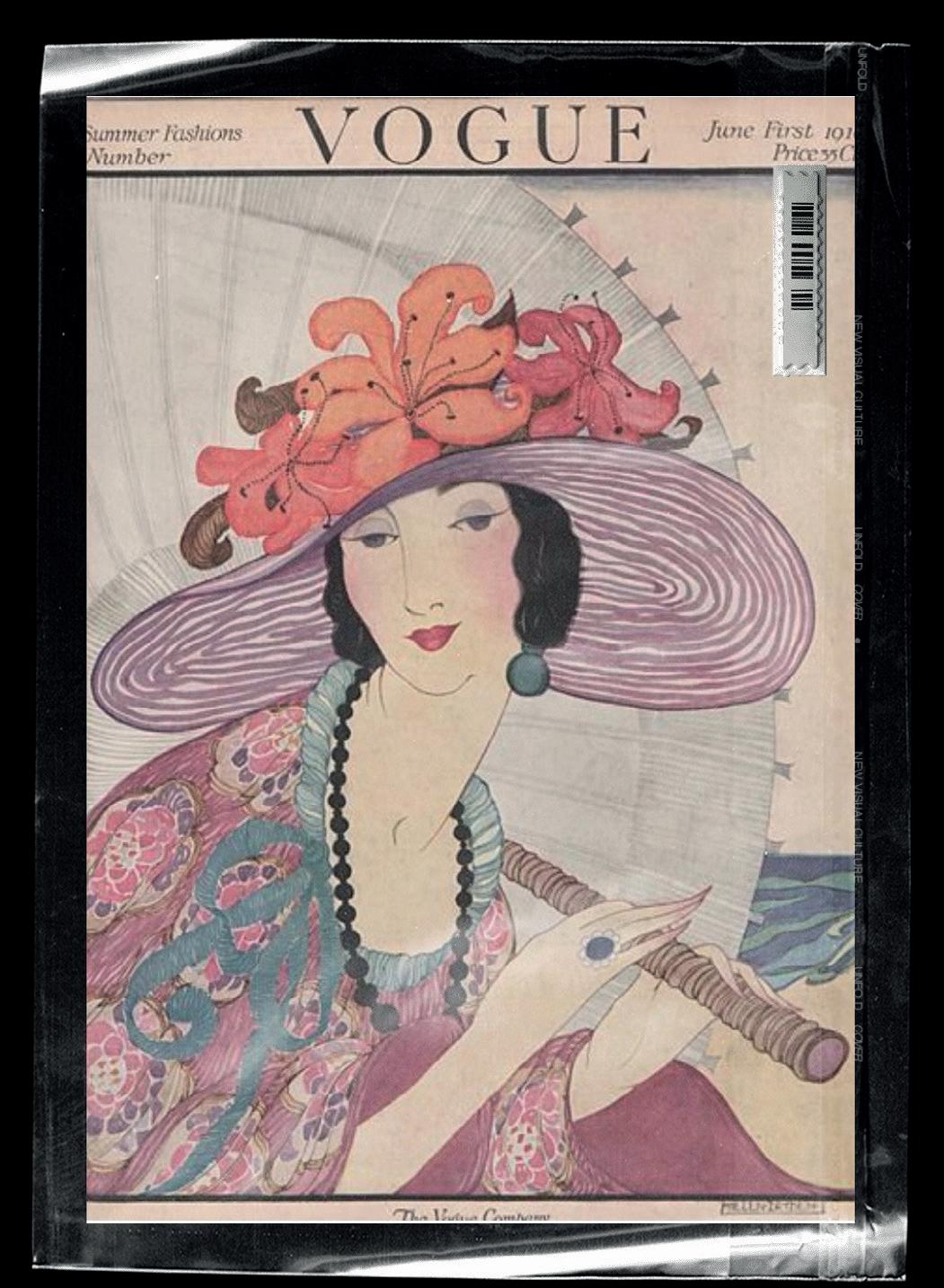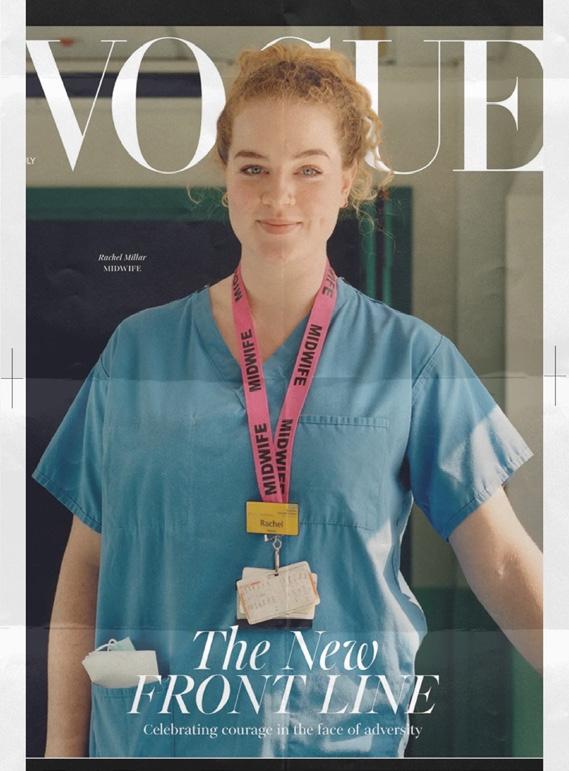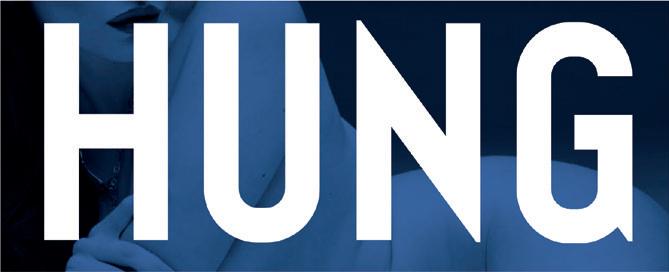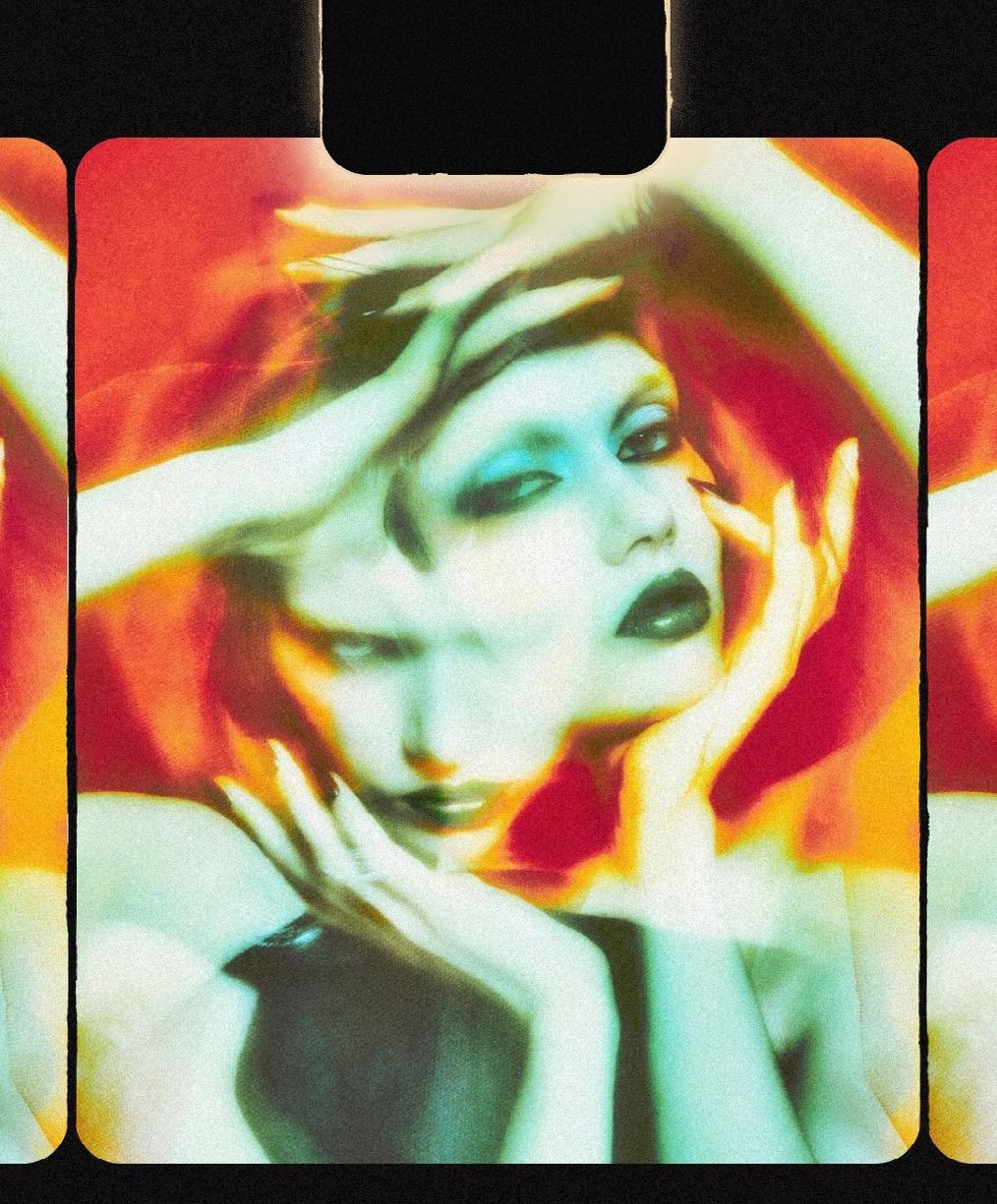
7 minute read
MAGAZINES

Fashion magazines or magazines in general are a great tool for fi nding out recent information as they tend to stay up to date on topics relating to their subject. In particular this essay will focus on fashion magazines as one may say they are quite literally a pandora’s box for hosting some of the best fashion images to date. They often pay homage to designers and photographers who have paved the way and continue to remain relevant after many years of business.
Advertisement
Not only are fashion magazines able to dissect and discuss designers and the latest trends, but through communication, they are also able to write about and cover areas of culture, social change (after all they are often infl uenced by social change), community and more (Vosper-Woghiren, 2013), ultimately providing a bigger picture of what is happening around the world and around the reader – a sign of the times perhaps.

Fashion imagery (photography) can be dated back to the 1850s , however it wasn’t until 1867 that Harper’s Bazaar was published and Vogue in 1892. In 1909, Condé Montrose Nast purchased Vogue and British Vogue launched in 1916. Fashion photography became more popular in the twentieth century where magazines were aimed at women who could escape their everyday roles of mother and wife and would instead be liberated and given inspiration of new trends that were surfacing.
Vogue is a leading magazine that has always remained prominent at the forefront of fashion magazine publishing. It is a monthly fashion and lifestyle magazine that covers areas including fashion, beauty, culture and runway. It informs us on current issues and there are also 27 international editions of Vogue covering different countries. This is important as although we should unite together to create, it reinforces the importance of culture and inclusivity. We can also read up on and educate ourselves on what is happening across the world more globally than what we may receive in our own monthly editions. Fashion magazines and those especially evolving around the world of editorial are heavily packed with imagery from latest collections, designers themselves, actors and actresses, royalty, athletes, everyday life etc. There is a plethora of varying types of photographs and subjects within magazines. Publications such as LOVE and POP magazine are intended to be used as inspiration for designers and creatives and are both published biannually. Vogue on the other hand is published once a month and is often a thinner magazine due to biannual magazines packaging up 6 months of hard work.
Pre-pandemic, magazine publications had websites and often offered online subscriptions, however in the midst of the Covid-19 lockdowns, the world of digital and online sharing was accelerated dramatically as the only way to communicate was through online. Not only did this mean companies having to adapt and work socially distanced, publications also found the time to appreciate the new front line workers where we were visually able to see who was helping and risking their lives for us. The images in the July 2020 issue of Vogue focussed on our reality (Enninful, 2020) which showed magazines tackling current issues, that were being faced on a global level. Fashion imagery is able to confront us with a harsh reality, but it can also take us to an innovative place and one that can help us escape our everyday lives.
FIGURE 3: Vogue front cover July 2020 photographed by Jamie Hawkesworth FIGURE 4, 5 & 6: Hunger Magazine Front Covers

FIGURE 4. FIGURE 5. FIGURE 6.
unger is a biannual magazine which launched in November 2011 and offers a platform for uncompromised self-expression, innovation and discovery. It covers areas of fashion, photography, beauty, art and culture, fi lm and music. It is accompanied by hungertv.com which offers a different insight to shoots with behind-the-scenes fi lm. Rankin notes that he loves the internet and the potential it has and “it’s like the magazine has come alive in fi lm, rather than pictures and words” (Milligan, 2012). They have a large following of 217k followers of their Instagram account and seem to post on most days. More recently for their beauty issue, they have incorporated animation into their front covers/ posts for Instagram. Frank Nitty is credited for such creations as he has enabled pieces of the face to be sliced, bounced, swirled and boomeranged back to the starting point through short clips. It deconstructs and re-constructs the subject of the photograph, highlighting areas makeup would be applied. It is innovative and creative and fashion imagery is about being one step ahead of the game. The integration of animation and fi lm, demonstrates publications are utilising the digital realm to capture attention and grow their audience. Posting on Instagram allows followers to be informed regulary compared to waiting every six months to see what’s inside the magazine pages.


FIGURE 7 (series) : Screenshots from Hunger Magazine Instagram 13
With the surge of online presence that magazine publications have, will we source our fashion imagery all online? To counter-argue the impact of the digital sphere, it can be viewed that it takes away the tangible elements that hardcopies of magazines have. The glossy or matte textures of pages would merely become a one tone screen appearance that perhaps wouldn’t do the image justice. In the future with online magazine subscriptions already being a thing, we could have to order magazines so they are essentially made to order. This could reduce surplus magazines in stores that fail to sell out and the impact the print industry for magazines on the environment could be reduced as well. However, this could then remove the in-store excitement of picking up a magazine you hadn’t seen before or discovering an interest in a new one.
Although more and more people move online today, such as Generation Z and Generation Alpha who are tech savvy, there will always be people who want something tangible, something sentimental and magazines could become even more special collectables in the future.
We could also see all fashion magazines move to bi-annual publications as this could also reduce waste, the fast-paced industry could slow down and have time to breath and it could further improve engagement and sentimentality readers have to the publication. Nonetheless, it seems that the online world demands faster turnarounds all the time and Instagram platforms are all about content creation and providing new content regulary to keep up with attention spans and capture audiences. This only increases editorial shoots and images being created behind the scenes of the magazines which in turn means more money and more regular shoots which can sometimes cost hundreds of thousands of pounds to create.
Within the heart of many fashion magazines, contains editorial shoots. Sometimes 16 page spreads showcasing a variety of approaches, stories and poses that have been captured. British fashion photographer Tim Walker uses photoshop to help distort and accentuate proportions of the subject. His photoshoot sets are usually pieces of art themselves, as from figure [] it is noticeable how the set is very creative and far from a plain background. Walker loves the fantasy side which is evident through his work, what if we were able to plant ourselves virtually into the editorial sets in the future. Artificial Intelligence could be used through headsets to access a 360º look. Links could be placed inside of the magazine pages so they are easily accessible.
Looking at figure [], this is the work of Elizaveta Porodina, a Munich based photographer. She is able to showcase essences of dark romanticism and her work has a melancholy touch to it. . Escapism is a word that can be used to describe how looking
at her work can make you feel, the haziness of how the image has been re-worked takes you to a different world. In the future, there could be filters that allow you to take photographs of yourself and other people that have a similar appearance to that of your favourite photographer.

FIGURE 8: Harry Styles (2019) photographed by Tim Walker FIGURE 9: Photograph for Pop Magazine photographed by Elizaveta Porodina (2021)

Fashion magazines will always be pinnacle when it comes to fashion imagery as a means of communication as the visuals help tell the story and the journalism can work in harmony with what the writer, photographer and designers are trying to portray.







